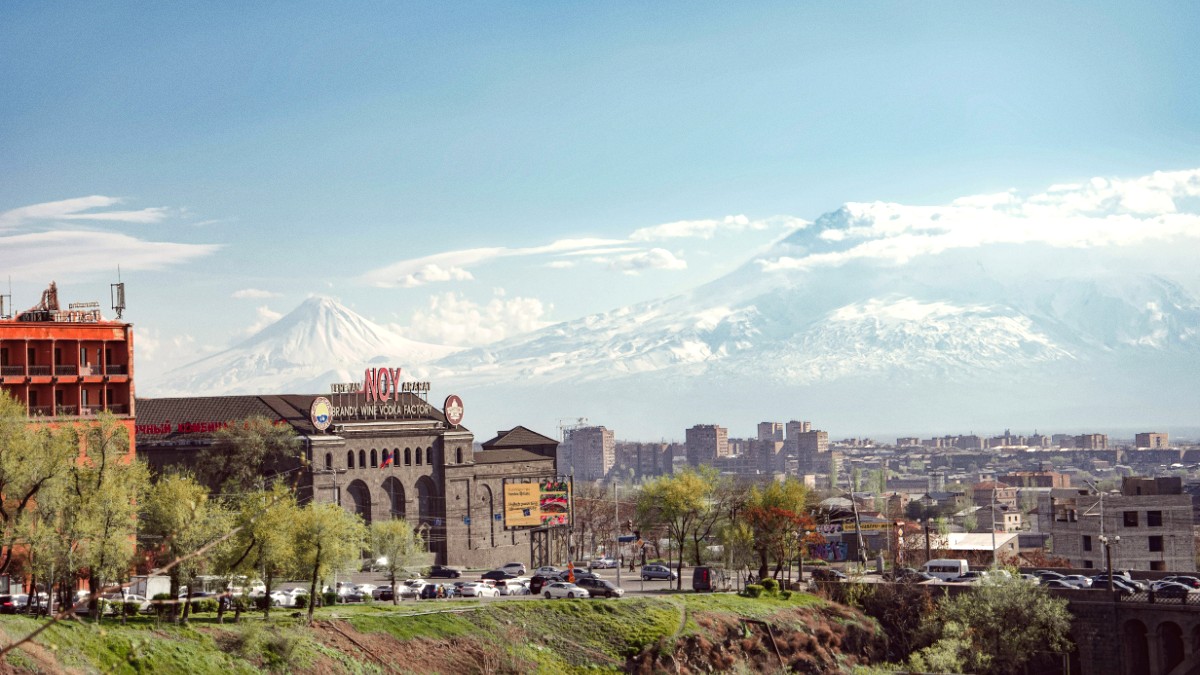
Armenia
The city's urban layout flows from its central core, built around the Republic Square and Opera House, expanding outwards into various districts. The Hrazdan Gorge, a natural canyon running through the city, presents a refreshing contrast to the urban landscape, offering green spaces and a natural boundary to some areas. This geographical diversity means that within the city limits, one moves from bustling city squares to tranquil riverine paths swiftly. The surrounding landscape features rolling hills, fertile plains, and in the distance, the rugged peaks of the Lesser Caucasus Mountains, home to many of Armenia's historic monasteries and natural wonders. This setting makes Yerevan a fine base for exploring the diverse landscapes of the country, from high-altitude lakes to ancient forests, all within a reasonable drive. The city's location also places it in a seismically active zone, a geological reality that shaped some of its historical architecture and urban planning, though modern construction adheres to strict safety standards.
Yerevan carries a history spanning nearly three millennia, making it older than Rome. Its founding dates back to 782 BC, when the Urartian king Argishti I built the fortress of Erebuni, from which the city derives its modern name. This ancient past is visible in archaeological finds and in the enduring spirit of its people. Throughout its long history, Yerevan withstood numerous invasions and periods of foreign rule, including Persian, Ottoman, and Russian empires. Each era left its mark on the city’s architecture, culture, and customs, creating an unique synthesis of influences.
The city became the capital of the First Republic of Armenia in 1918 and later of the Armenian Soviet Socialist Republic in 1920. The Soviet period brought extensive urban development, notably the master plan by architect Alexander Tamanian in the 1920s. Tamanian’s vision transformed Yerevan into a modern city with broad avenues, grand squares, and buildings constructed from local pink volcanic tuff stone, giving Yerevan its characteristic rosy hue. This planned development largely defines the city's appearance today, creating a harmonious blend of neoclassical design with Armenian architectural motifs. The 20th century also presented immense challenges, including the Armenian Genocide of 1915, a tragedy that profoundly shaped the nation's identity and memory. Yerevan is a living memorial to this past, with the Tsitsernakaberd Genocide Memorial Complex serving as a powerful reminder. Despite its complex history, Yerevan has always been a hub of Armenian culture, education, and innovation. It is a city that remembers its past with reverence while constantly looking towards the future, rebuilding and evolving. This deep historical grounding and resilience give Yerevan a profound depth, offering visitors more than just sightseeing; it offers a journey through the annals of human civilization and perseverance.
Yerevan presents a memorable experience for any traveler. It combines the relaxed pace of an European city with the warmth of Caucasian hospitality. The city center is easily walkable, inviting exploration of its many attractions on foot. Art and culture flourish here, from the modern art installations at the Cascade Complex to the ancient manuscripts housed in the Matenadaran.
The culinary scene is a delight, offering everything from traditional Armenian barbecue (khorovats) to modern fusion dishes, all rooted in fresh, local ingredients. Evenings come alive with music, from jazz clubs to opera performances, and the city’s numerous cafes and wine bars present perfect spots for people-watching and relaxation. The iconic view of Mount Ararat, ever-present on clear days, adds a layer of spiritual beauty to the urban landscape. Yerevan is a city that surprises and charms, revealing its layers of history and modernity with every step. Its manageable size and friendly atmosphere make it a city simple to navigate, allowing one to quickly feel at home and immerse oneself in the local way of life.
The city's central hub, famous for its singing fountains.
Stairway with art installations and panoramic city views.
A cultural landmark and performance venue.
Museum of ancient manuscripts.
Armenian Genocide Memorial Complex.
The city's food scene ranges from traditional Armenian barbecue (khorovats) to modern fusion. Dishes use fresh, local ingredients.
Evenings bustle with music, from jazz clubs to opera performances. Numerous cafes and wine bars present ideal spots for people-watching and relaxation.
The iconic view of Mount Ararat, often visible on clear days, lends a layer of spiritual beauty to the urban landscape, a constant presence for city dwellers.
Republic Square, Yerevan, at sunset. A central hub of the city.
Yerevan combines the relaxed pace of an European city with the warmth of Caucasian hospitality. The city center is walkable, inviting exploration of its many attractions. Art and culture thrive here, from modern art installations to ancient manuscripts.
The city reveals its layers of history and modernity with every step. Its manageable size and friendly atmosphere make it a city simple to navigate, allowing one to quickly feel at home and immerse oneself in the local way of life.
Many attractions are close, making it easy to explore on foot.
From modern installations to ancient manuscripts.
Traditional dishes and modern fusion await your taste buds.
Yerevan is known for the warmth of its Caucasian hospitality, making visitors feel at home.